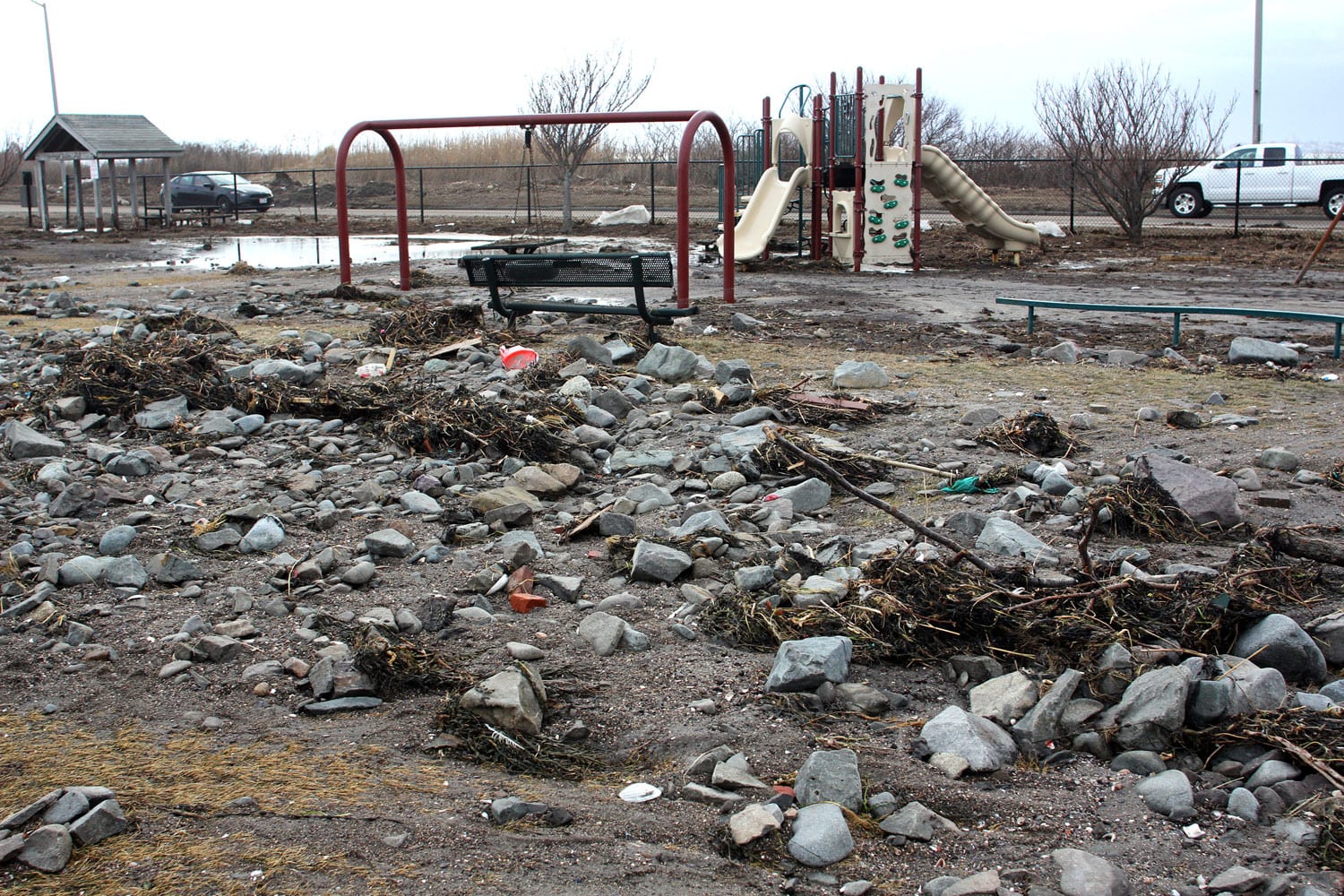NAHANT — Days after a monsterous Nor’easter churned off the coast of New England with hurricane-force winds and rain during dangerous high tide cycles, Nahant remains in a state of emergency.
The causeway remained open Friday, though several roads were already deemed impassable during the day. The trouble in Nahant came with the next high tide Friday night, and again on Saturday afternoon. While the high tides kept coming, much of the water never receded, said Mike Halley, director of Nahant’s Emergency Management Agency.
“Part of Nahant Road is shut down,” said Halley. “We have 10 pumps still trying to pump water out of the lowlands. Willow Road and parts of Fox Hill Road are still under water. The national guard has since left, but we’re considering calling them back tomorrow.”
The National Guard was in town with military transportation vehicles in case of a necessary evacuation while the causeway was impassible.
There is significant damage to the seawall at Tudor Wharf and Wilson Road, and water remains at the ball fields and on Ward Road, among others, he said.
“Some people are comparing this to the Perfect Storm in ’91,” said Halley. “It’s worse than the Blizzard of ’78. We are still in a state of emergency. A large section of Nahant Road will be blocked off indefinitely until we can drain down the lowlands.”
Enzo Barile, chairman of the Board of Selectmen, said the damage the town is facing is similar to the aftermath of the Blizzard of ’78, but with the addition of stubborn flood water.
“We didn’t have the high tide cycles with the Blizzard of ’78,” said Barile. “I can remember going down to Nahant Beach and getting shellfish and clams. With this, I wouldn’t dare to. It’s absolutely wild.”
If the water doesn’t recede, there is concern that a storm expected to hit later this week could have similar effects.
The State building inspector and Department of Environmental Protection are evaluating the damage. Because Gov. Charlie Baker has declared a state of emergency, the town plans to ask for Massachusetts Emergency Management Agency and Federal Emergency Management Agency funding, low interest loans, and reimbursements, said Barile.
“I think the cleanup alone will cost $300-$400 thousand,” said Barile. “After that we’re talking millions in repairs. We have seawall repairs and home repairs. The town is looking for reimbursements. It’s up to the state and federal government. All we can do is ask.”

